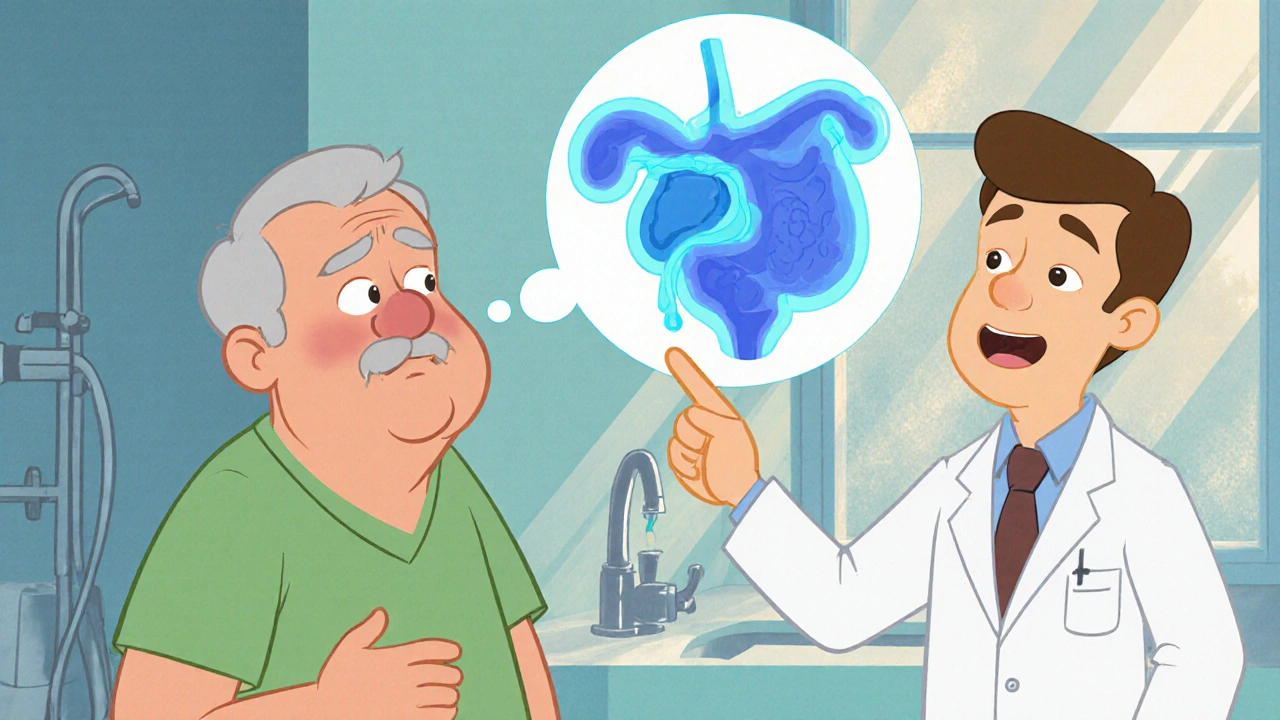Tamsulosin: Everything You Need to Know
When working with Tamsulosin, a prescription alpha‑blocker that relaxes the muscles of the prostate and bladder neck. Also known as Flomax, it helps improve urine flow in men with an enlarged prostate. This medication is closely tied to Benign Prostatic Hyperplasia, a non‑cancerous growth of the prostate that can cause frequent or weak urination, and belongs to the broader alpha‑blocker class, which works by relaxing smooth muscle in the urinary tract. The end result is less urinary retention, smoother stream, and fewer nighttime trips to the bathroom. If you’ve ever wondered why doctors prescribe a pill rather than surgery for BPH, the answer lies in how Tamsulosin targets the same pathways that cause the prostate to squeeze the urethra.
How It Works, Who Should Take It, and What to Watch For
Mechanistically, Tamsulosin blocks alpha‑1A receptors found predominantly in the prostate and bladder neck. By doing so, it reduces the tone of those muscles, which lowers resistance to urine flow. Most patients start with a 0.4 mg tablet taken once daily, preferably after the same meal each day to keep blood levels steady. The drug’s effect on blood pressure is modest, but because alpha‑blocks can cause a dip in systolic pressure, doctors often check for dizziness, especially when standing up quickly. Common side effects include light‑headedness, nasal congestion, and occasional ejaculation changes. Rarely, patients may experience severe hypotension or an allergic rash, so any sudden swelling or breathing trouble should trigger an immediate call to a healthcare provider.
Interaction-wise, Tamsulosin should be spaced away from other alpha‑blockers or potent vasodilators to avoid additive blood‑pressure drops. It also works well alongside 5‑alpha reductase inhibitors like finasteride; the two drugs tackle BPH from different angles—one relaxes muscle, the other shrinks the gland over time. Kidney function doesn’t usually affect dosing, but severe liver impairment might require a lower dose because the drug is mostly metabolized in the liver.
If you’re considering Tamsulosin, ask your doctor about your current blood‑pressure meds, any history of heart disease, and whether you’ve had recent eye surgery (the drug can affect pupil dilation). Regular follow‑up appointments let your provider gauge symptom improvement and catch any side effects early. Lifestyle tweaks—reducing caffeine, staying hydrated, and timing bathroom trips—can boost the medicine’s benefit and keep you comfortable throughout the day.
Below you’ll find a curated list of articles that dive deeper into topics like prostate health, managing side effects, comparing Tamsulosin with other BPH treatments, and practical advice for staying on track with your prescription. These resources will give you the details you need to make informed choices and get the most out of your therapy.

